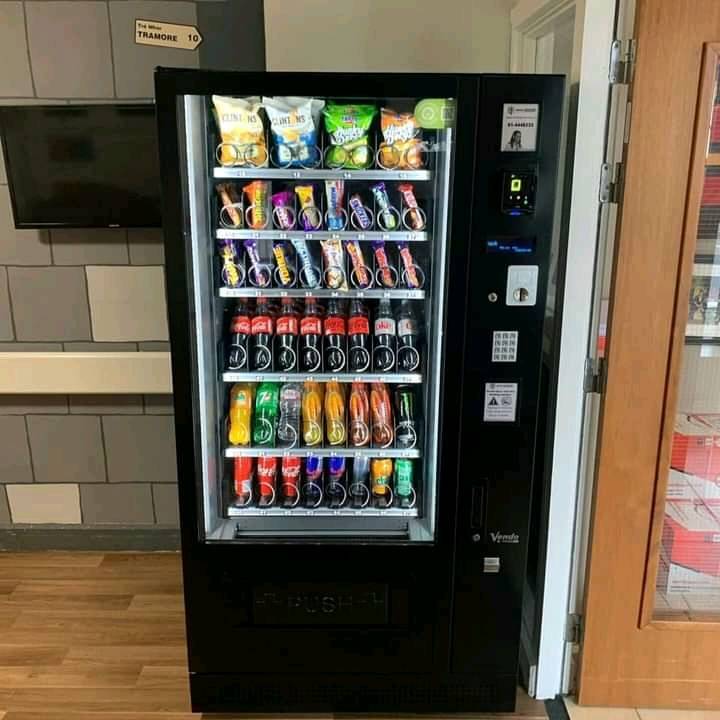When planning to launch or expand a vending business, one of the most common questions people ask is: how much does a vending machine cost in 2025?
The answer depends on the type of machine, the features you need, and whether you choose new or used equipment. In 2025, vending machines come in a wide range of styles and price brackets, from simple snack dispensers to high-end touchscreen models. Understanding these cost factors will help you budget wisely and choose the right machine for your business.
Average Vending Machine Price in 2025
On average, commercial vending machines in 2025 can range anywhere from a little over a thousand dollars to several thousand dollars. The variation comes down to what the machine can do:
- Snack vending machines are usually on the more affordable end.
- Drink machines cost more because they require refrigeration.
- Combo machines (snacks + drinks in one unit) sit in the middle, balancing versatility with cost.
- Coffee, frozen food, and touchscreen machines are typically at the premium end.
For most buyers, the sweet spot lies in choosing a machine that balances features with expected traffic at the location.
New vs. Used Vending Machine Prices
Another factor in vending machine cost is whether you buy new or used.
- New machines: Higher upfront price, but you get the latest technology, warranties, and energy-efficient designs.
- Used machines: More budget-friendly, often 30–50% cheaper, but they may not have cashless systems or the latest designs.
- Refurbished machines: A middle ground previously owned but reconditioned to reliable standards.
For someone just getting started, used or refurbished equipment can keep initial costs lower, while larger operators often invest in new machines for long-term reliability.
Features That Influence Vending Machine Cost
When comparing vending machine prices in 2025, it’s not just the size of the unit that matters it’s the features.
- Cashless payments: Machines with credit card readers, tap-to-pay, or mobile wallet integration cost more than cash-only versions, but they also tend to earn more.
- Touchscreens: Units with interactive screens are more expensive but provide a modern experience that attracts customers.
- Energy efficiency: Eco-friendly cooling systems or LED lighting may add to the upfront cost but save money over time.
- Capacity and design: A compact snack machine costs less than a large multi-column drink unit or a specialty machine designed for coffee or frozen foods.
Essentially, the more advanced the features, the higher the price but also the greater the earning potential.
Additional Startup Costs to Consider
When budgeting for vending, the machine itself is only one part of the total investment. Other costs include:
- Product inventory to stock the machine initially
- Licensing and permits, which vary by region
- Ongoing maintenance and cleaning to keep the machine running smoothly
- Location fees or commissions, if placing the machine in a private business or high-traffic area
Factoring these into your budget gives you a clearer view of your vending business startup cost in 2025.
Return on Investment (ROI)
One of the biggest advantages of vending is the strong return on investment. A strategically placed vending machine can generate steady revenue month after month.
Modern machines with cashless payment options often perform better, since fewer customers carry cash today. High-traffic locations such as schools, offices, gyms, and transportation hubs tend to deliver the fastest payback times.
Even though the upfront cost of a machine varies, most operators find that their equipment pays for itself within the first year or two. After that, the machine becomes a source of ongoing passive income.
Choosing the Right Machine for Your Business
The right vending machine depends on your customer base:
- Schools and offices often benefit from snack or combo machines.
- Gyms and wellness centers do well with healthy snacks and drink machines.
- Hospitals, airports, and transit hubs are ideal for larger, cashless, or touchscreen machines.
- Recreation venues may see strong results with novelty machines like claw games or toy dispensers.
By matching your machine type to the environment, you maximize both customer satisfaction and profitability.

Thoughts
So, how much does a vending machine cost in 2025? The answer varies widely, but machines are available at accessible price points for beginners as well as advanced options for established operators.
Instead of looking at cost alone, think of vending machines as an investment. The right machine in the right location can provide years of steady income, making the upfront purchase well worth it.
If you’re ready to explore options, check out the range of snack, drink, combo, coffee, and touchscreen machines available at Alpha Vending Machines. You’ll find models that fit every type of location and business need.
📌 FAQ
Q: How much does a vending machine cost in 2025?
A: Prices range widely depending on type and features, from entry-level snack machines to premium touchscreen models.
Q: Are used vending machines cheaper?
A: Yes. Used machines can cost 30–50% less than new ones, though they may lack modern cashless systems.
Q: Do vending machines still make money in 2025?
A: Absolutely. With good placement, vending machines can generate consistent monthly income and usually pay for themselves within 12–24 months.
Q: What’s better new or used vending machines?
A: New machines offer the latest features and warranties, while used or refurbished machines can be more budget-friendly. The best choice depends on your goals and budget.
